
Ice Mountaineering - Quick Guide
Ice Mountaineering - Overview
Ice mountaineering is a sport played on icy hills and mountains. Broadly, it can be of two types i.e. mountaineering on frozen water or mountaineering on frozen ice. Frozen water means frozen waterfalls and frozen ice means big mountains. It is one of the dangerous sports as the athlete needs to climb the mountain in adverse weather conditions.
There are three official disciplines of this sport and they are −
- Speed
- Lead difficulty
- Bouldering
In Ice Mountaineering, a World Competition is organised every two years. An athlete has to climb the mountain and to conquer the world title either under Speed or Lead difficulty category.
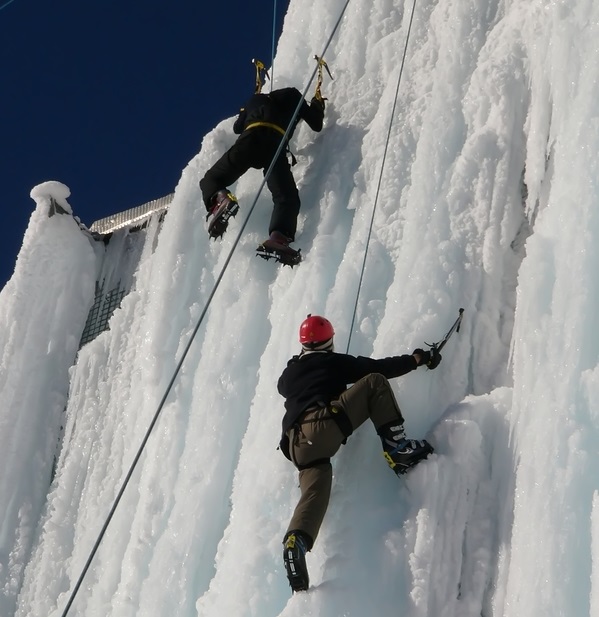
A Brief History of Ice Mountaineering
Ice Mountaineering got official sport recognition by UIAA (International Mountaineering and Mountaineering Federation) when first world cup was organised by proper rule at Italy, Switzerland, Russia, Austria and Canada.
After these international world cups, European championships were also organised. First common rule for this sport was drafted in the year 1998. Before the commission of UIAA, the world cup was organised by a private German company until 2002. However, Ice Mountaineering can be traced back to 1912, when one ice mountaineering competition was organised in Brenva Glacier, Italy.
Participating Countries
Love of mountaineering has united many nations and continents together for past many years. The sport is all about challenging yourself every time for worst situations and so people love to participate in this sport.
The fever of Ice Mountaineering has spread over many countries. The countries that participate in this sport are India, South Africa, China, Germany, Japan, France, Pakistan, Italy, Sri Lanka, Netherland, Nepal, United States, Iran, Canada, Korea, New Zealand, Malaysia, Argentina, Bangladesh, and Brazil.
Ice Mountaineering - Equipment
As ice mountaineering is an adventurous sport, therefore it is necessary that all the equipment used for this purpose should be compliant with UIAA standards and should be robust, comfortable to enhance the performance of the climber. In this chapter we will discuss about the equipment used in the sport.
Ice Axe
The axes used for mountaineering are different than normal ones as they have more aggressive inclination and curves. It is light weighted and an athlete can move it freely.
Pick
Modified picks are used here having thicker size and high angle of inclination. Instead of tapper steel, reinforced steels are used in its making.
Ice Mountaineering Shoes
The boots used over here are lightweight. Nowadays designers are manufacturing fruit boots along with crampons bolted to the sole of the boot.
Helmet
Helmet is an important safety equipment and is mandatory. Any helmet that satisfies UIAA standards can be used. Lighter the helmet, better is the performance.
Gloves
As the sport is played on ice, so gloves are necessary too. However, they should be made up of thin leather material to maximize the gripping with axe and aid performance.
Timing System
Timing systems are not for the competitor but for the referee, as it is necessary to note how much time one athlete took to mount from the starting point till the end point.
Holds
Holds are the route setting materials that are made up off resin and sand materials. They are very strong and are used by the riders to mount further up.
Ice Mountaineering - Environment
Playing environment of this sport demands icy mountains and hilly structures. More stiff and curvy the structure is, more difficult will be the level. Keeping in mind the adverse effects of mountaineering, adequate measures are also taken to ensure the safety of competitors.
UIAA also builds artificial ice mountaineering structures. These three dimensional structures will be something different than other sport mountaineering structures. The walls are large ice panels and are fabricated in such a way that it is nearly impossible to mount those structures without ice axes.
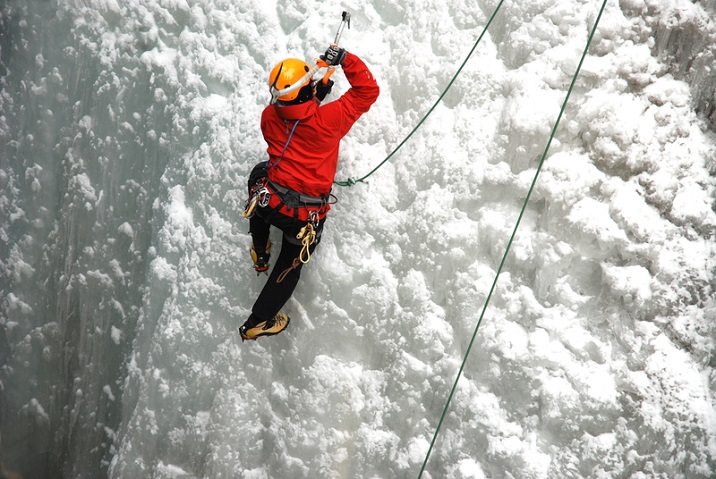
The structures are made up of wood and ice. It contains various reliefs such as vertical sections, over hanging sections, ice barrels etc. Mountaineering these structures is not only a physical challenge but also a mental test too. UIAA directs organisers to ensure that ice is on the wall to preserve the identity of the sport.
Sometimes when environment is not permissible to use ice, wood structures may be used and climbers with the help of crampons present under their shoes can climb on any part of wood without any problem. Through bolts and screws, mountaineering holds are fitted inside the panel to make the routes easily accessible.
Ice Mountaineering - How to Play?
As the sport has become extensively popular, the competition levels have also increased. The routes have become more difficult with 40-60 moves and that also contains many sub difficult stages. The time has become limited than before. That means a climber must maintain a good speed along with robust physical and mental strength. Lets discuss some basic moves.
Ice Mountaineering Moves
Among all the moves that have been shown over here, figure 4 is the most popular one due to two reasons. Sometimes the holds are placed at relatively long distance and use of this technique helps an athlete to reach those holds easily. Secondly, this move eliminates the fear of slipping of your axe from the hold.
In order to perform the move as shown in figure 4, a series of moves have been shown. If the portion that you are mountaineering is much peaky and have heavy inclination, this step can be useful. One major thing that can be noticed here is that, this process allows the athlete to bring his centre of gravity close to the wall and high which is very important in terms of balancing aspect.
Though it sounds easy but performing it is not certainly an easy task. This is because you have to position the centre of gravity of your body under the axe in a hold position. If you are trying to switch on an overhanging position from a vertical peak quickly, this is an ideal step for you.
Much energy is wasted when a climber swings from one hold to another hold and this in turn reduces the performance. Using move as shown in figure-4 saves that energy as the center of gravity of climbers body remains close to the axe.
Ice Mountaineering Undercling
On the inclining surface, some holds are there whose working area face downward. They are called undercling. An athlete must handle those holds carefully with his axe. The axe should be notched into the hold with an inverted form.
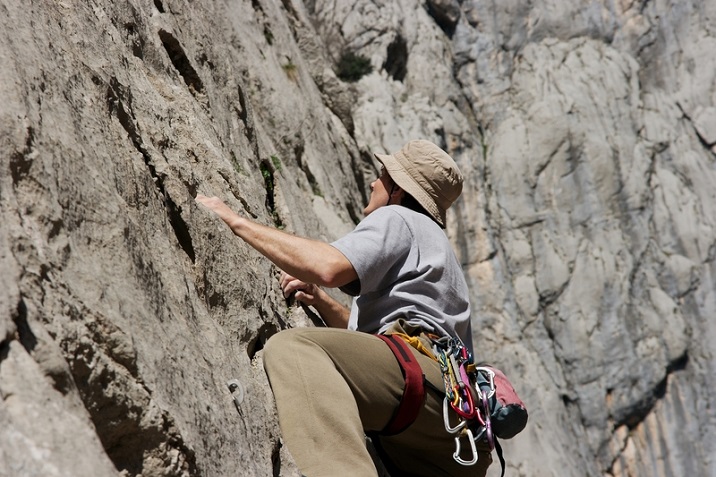
The muscular power plays a major role while performing this. Especially an athlete should be strong enough from his shoulder, arms and legs portion. For longer moves he should spread more his legs with much muscular power. Below is shown an image that shows the position of climbers feet with the axe while performing this step. You can clearly see that they form a triangular shape.
Ice Mountaineering Hand Changing
During the process of mountaineering, very often an athlete needs to change his position of hand in order to move to another place or to give rest to his other arm. An athlete can use second axe for performing the hand change but he has to follow the rules made by UIAA.
It takes some time for a new user to get acquainted with this process. But there is a danger side of this technique too. A slightest imbalance can cause the axe to come out of the hold and the climber may fell down.
Ice Mountaineering Footwork
This is another important aspect that an athlete needs to focus upon. Foot work is specially needed on the crampons that are attached to the shoes. However, the process is not same as that of the footwork needed in hill mountaineering. While being in a climb position, it is difficult for an individual to create pull force through foot. Therefore, the actions like stabilizing, balancing, supporting on the ice through crampons get limited.
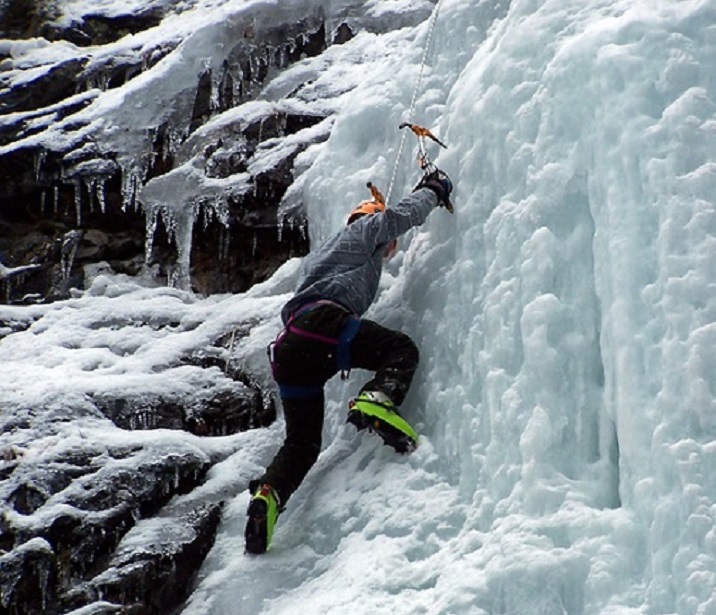
A rock climber can easily mount through difficult path with the help of his abdominal muscle power, high friction of shoes on the rock or through ability to scum holds but such is not the case here. When one front of his toe is touching the wooden block, it is difficult to generate enough pull force unless that is compensated by arm and back force.
Ice Mountaineering - Rules
UIAA is the governing body for creating and implementing rules of ice mountaineering and all other individual bodies who organise ice mountaineering competition, have to follow the same. Some of the rules of the sport are as follows −
Before the Ascent
The climber has to be tied with a rope that is 8 in shape and also with a stop rope.
Wait for the belayer to be ready before the starting of the match.
Wait for the judge to be ready.
The position of the two axes should be on the starting area which is marked with blue colour on a hold.
Pre-clipping of the first quick draw must be done.
As soon as one of the axes leaves the starting area, stopwatch gets started.
During the Ascent
At the time of route preview, the mountaineering period is announced to all the participating athletes in advance. This period is decided by the chief judge of the tournament and the chief route settler.
Every rider has the right to ask the referee about his remaining time of ascent.
It is the judge in charge of the route who announces the last minute of the sport.
Certain boundary lines are drawn in red colour. If an athlete crosses that red line then he/she will be disqualified from the sport.
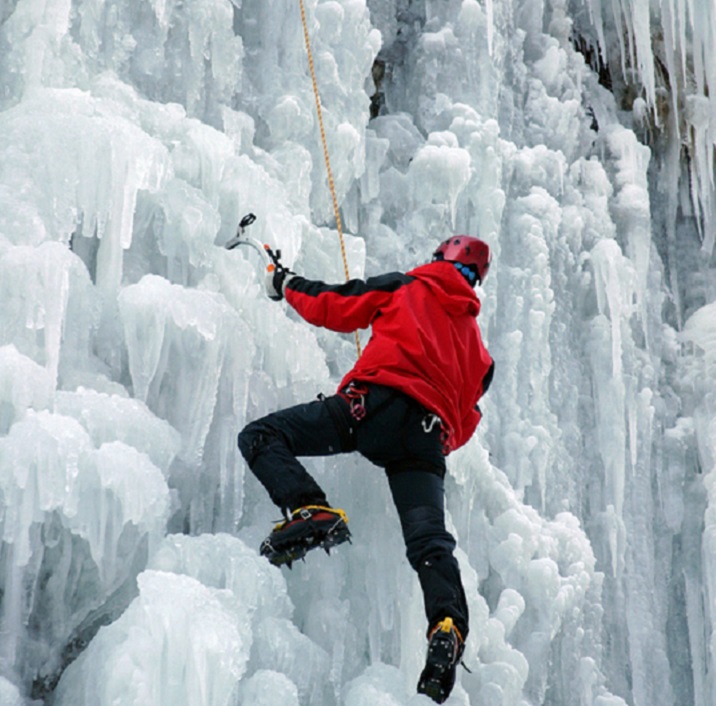
End of the Ascent
A riders ascent comes to an end in the following cases −
Lapse of official time
Fall of the rider
Touching of the boundary line by the athlete
If a climber fails to clip the quick draws in sequence
If a rider touches the ground after his/her ascent
If the climber uses any other aiding devices to support his mountaineering apart from his hand, legs, axe or arm.
If an athlete fails to wear any mandatory safety equipment as prescribed by the governing bodies.
Ice Mountaineering - Tips to Excel
To become an excellent ice climber, you can opt for either of the following two ways. You go on mountaineering as much as possible but this process will give you very slow result or else you follow the three step approach. That is −
- Set your goal
- Analyse the current strength and weak areas of your training
- Focus on improving on the areas where you are weak
Setting Goals
It is important that the goal must be specific, that means you should focus on only those areas upon which you want the improvement. Secondly, it should be measurable and assignable. It should not be unrealistic unless you will find yourself in a loop hole of failure even after N number of tries.
Categorise your goals into short term, middle term, or long term wise. This will help you in getting a clear picture of what and how you want to achieve details. Develop your own tactics and formula to excel in every stage of the sport. This can be only achieved by properly understanding your sport and goal.
Analysing Strengths and Weaknesses
Analysis on the strength and weakness should be done individually by both the athlete and the trainer. Find the weak points, list them down and work hard on them to improve. For example, if you want to compete in world cup level then you should be more serious about your timing, count movements, foot placement etc.
Similarly, you should also keep a track upon the performance of top players and should use it as a benchmark to improve yourself. Try to work hard upon high foot placement and one arm pull ups. Strength of your muscle, legs and shoulders matters a lot while aiming for a top spot.
Planning
For your mid-term and long-term goals, plan some training schedules. Divide each training schedule further into various cycles. Fix some deadlines to complete each cycle and monitor your progress. For an example if by nature you are very good at mountaineering then try to excel in enhancing your muscle power and if by nature you are excellent in that too try to improve your speed.
As we have discussed many times over here that leg power and shoulder power are much important, hence one should do core exercises such as daily jogging of 30-45 minutes, doing push ups and pulls ups to increase the back strength etc. Stretch your lower and upper part of your body thrice in a week to make your body more elastic.
Ice Mountaineering - Champions
International Mountaineering and Mountaineering Federation is the governing body of Ice mountaineering that organises international championships and tournaments all over the world. Apart from this, every country has their individual governing bodies that work under the guidance of UIAA to ensure fair play of the sport in their countries.
- World Youth Championships
- European Championships
- Asian Championships
- Ice Mountaineering World Cup Saas-Fee
Let us now have brief synopsis on some of the champions of Ice Mountaineering.
Maxim Tomilov
Maxim Tomilov is a Russian Mountaineer. He won the mens professional UIAA Lead title in the year 2012 that occurred in his hometown. Alexey Tomilov is his brother cum training partner.
In 2015 World Championship that was held in Italy, he bagged the first position in lead category again along with Woonseon Shin of South Korea. Maxim Tomilov also won the World Cup 2016 that was held in USA.
Nihal Sarkar
Nihal Sarkar is the only Indian who has participated in UIAA 2016 World Championship held in Korea from 15th January to 17th January.
Nihal was born in 1995 and made his debut as an Ice Mountaineer from Asian Championships that was held in South Korea.
He is currently a rising player and working on his arm and leg strengths as according to him these are the power suppliers for a mountaineer.
Janez Svoljsak
Janez Svoljsak is from Slovenia and was born on 1993. He ventured into this mountaineering sport in 2010. In 2014, he participated in World Cup and attained sixth position.
In the 2016 UIAA World Tour Championship, he performed extremely well and bagged a gold medal in Rabenstein World Cup and silver in Saas-Fee Championship.
In the lead category, Svoljsak managed to get 3rd position and crowned himself as European Champion.
Shin Woonseon
Shin Woonseon is a 34 years old champion from Korea. She has participated in this sport since 11 years. She started as a spot climber and outdoor climber around Dageo, Korea.
Her first championship under UIAA was 2007 World Tour where she won gold medal. She again bagged gold medal in 2010 World Tour, held in Busteni, Romania.
She also won the World Cup in 2015 by defeating Angelika Rainer.
Petra Klingler
Petra Klingler is from Switzerland and is a 24 years old mountaineer. She is in this sport since 2003 and internationally she has been in this sport since 2006.
She won Munich Youth Championship in 2011. She was the star performer of 2016 UIAA Ice Mountaineering World Championship.
In the womens discipline, she secured fifth rank on overall. In 2015 also, her ranking was third in Rabenstein, second in Chamnany-en-Vanoise, and first in Kirov.
Marianne van der Steen
Marianne van der Steen was born on 1984 and a resident of Netherland. She made her debut into this sport in the year 2009 and after that she has never looked back.
According to Marianne, Ice Mountaineering is nothing but a perfect collaborative harmony between the equipment and the physical strength of the climber.
In 2016 UIAA World Championship, her performance was not so good in lead category as she ranked 15th but on the other hand she gave her best in speed category and made a place for herself within top 10.
Angelika Rainer
Angelika Rainer is an Italian Ice mountaineer who was born on 1986. She made her debut into this sport in the year 2005 and proved herself as best in every upcoming events.
Out of her seven world cup seasons, she topped the ranking list twice (2012, 2015) and finished as the second best player four times.
According to her, technical skills, strength and arm power are the three key elements to become a successful ice mountaineer.